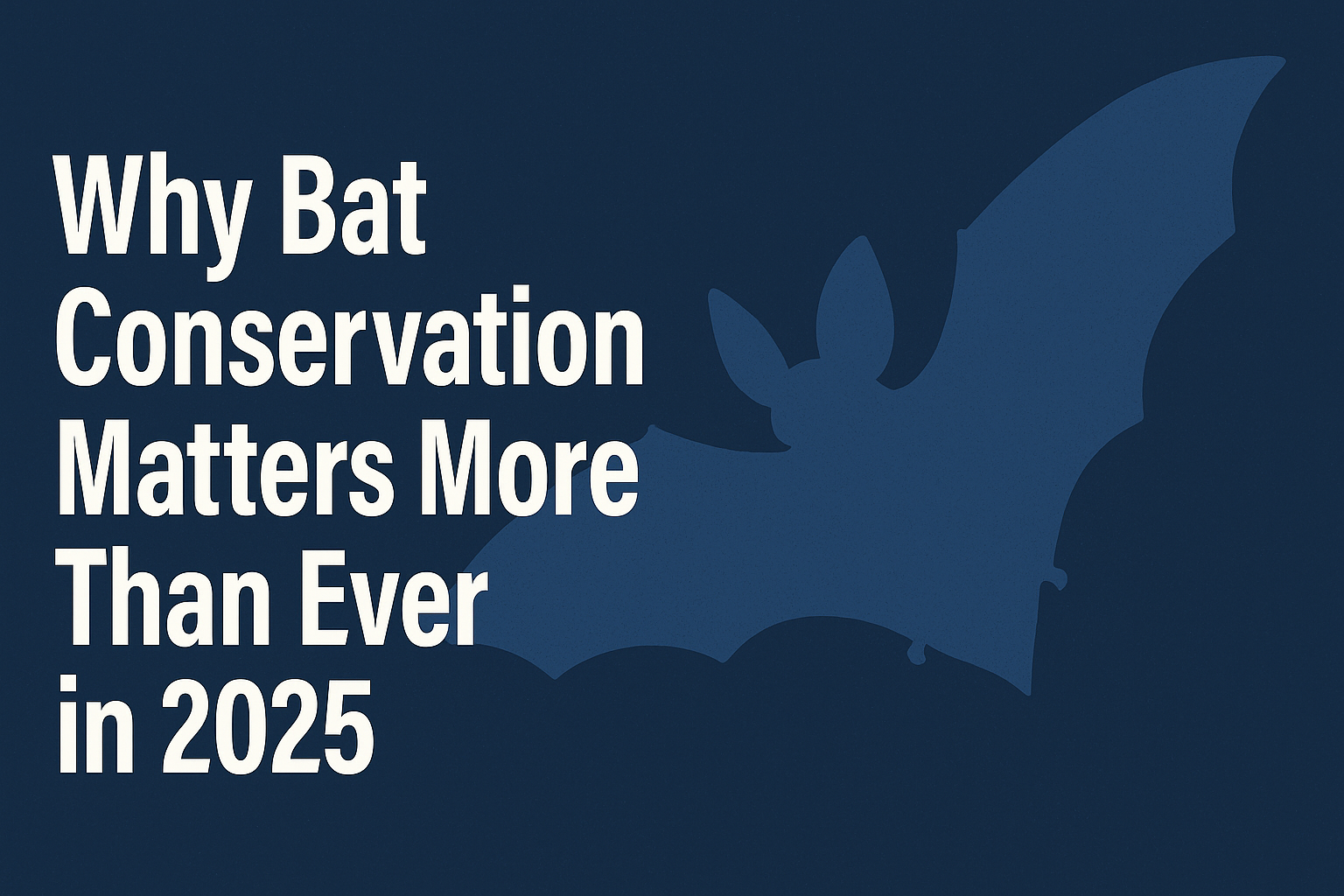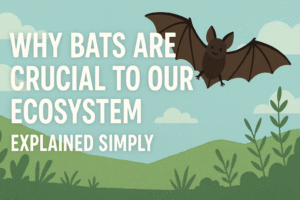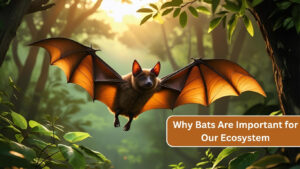Okay, let’s be real for a second: bats don’t get the same love as pandas, dolphins, or even bees. They’re misunderstood. Mysterious. Often feared. But in 2025, when our ecosystems are teetering, our climate is shifting, and biodiversity is hanging on by a thread—bats just might be the unsung heroes we didn’t know we needed.
If you’re wondering why bat conservation is such a big deal this year, or why people keep posting about #SaveTheBats on your feed… buckle up. I’m about to break it down simply, honestly, and from the heart.
1. Bats Are Natural Pest Control — And Crops Need Them
Picture this: You’re biting into a fresh ear of corn. Or a sweet, juicy tomato. Or maybe you’re sipping on your favorite wine. You probably didn’t thank a bat for that, did you?
But you should’ve.
Because bats are pest-eating machines. In fact, one little brown bat can eat over 1,000 insects in a single hour. Multiply that by millions of bats every night across the U.S., and you’ve got a natural, non-toxic pest control service that saves billions of dollars in agricultural damage every year.
In 2025?
- Crop yields are already under pressure due to extreme weather.
- Farmers are using more chemicals to battle bugs—chemicals that harm pollinators and the environment.
- Bats are the silent defenders keeping that in check… but their numbers are dropping.
2. They Help Regrow Forests
Fruit-eating bats do more than snack—they replant entire forests. After munching on fruit, they fly over long distances and, well, “poop” seeds in new places. This process—called seed dispersal—is vital for reforestation, especially in rainforests, where bats are the only ones brave enough to fly across open spaces.
And forests?
They store carbon.
They protect biodiversity.
They regulate rainfall.
In 2025, when reforestation and carbon capture are front-page climate goals, bats are quietly making it happen.
3. Pollinators in Capes
Bats don’t just chase bugs and reforest jungles. Some species are pollinators, too—spreading pollen while feeding on nectar. They help plants like:
- Agave (hello, tequila)
- Bananas
- Guava
- Cacao (yes, CHOCOLATE)
No bats = No pollination = No margaritas or chocolate cake.
Do I have your attention now?
4. White-Nose Syndrome Is Still Wiping Out Colonies
You might not have heard of White-Nose Syndrome (WNS) unless you’re a bat biologist or a really passionate hiker. But this deadly fungal disease has killed over 6 million bats in North America since it was first identified in the mid-2000s.
It spreads fast. It wakes bats up during hibernation, burning through their stored fat and leaving them to starve or freeze. It’s heartbreaking.
And in 2025?
- WNS is still spreading.
- Some species are now endangered.
- Without intervention, they could disappear entirely.
Conservation efforts—like protecting caves, researching treatments, and educating the public—have never been more important.
5. They’re Clues to Scientific Breakthroughs
Did you know bats:
- Rarely get cancer?
- Live 30+ years (which is wild for a small mammal)?
- Can carry viruses without getting sick themselves?
Researchers are studying their immune systems to unlock insights into aging, inflammation, infectious disease, and more. In a post-COVID world, where we all suddenly care about zoonotic diseases and public health, bats could be the key to major scientific breakthroughs.
But to learn from them, we need them to survive.
6. Ecosystems Are Crumbling—and Bats Are Critical Glue
Here’s the bigger picture:
In 2025, we’re facing:
- Climate chaos.
- Mass extinction.
- Rising food insecurity.
- Pollution and environmental stress like never before.
And bats?
They’re keystone species. That means they’re part of the foundational support system for entire ecosystems. You pull them out, and the whole thing can collapse.
Saving bats isn’t just about being kind to flying mammals.
It’s about preserving biodiversity, protecting food systems, and healing our relationship with nature.
7. Bat Myths Are Still Hurting Them
Let’s clear a few things up, shall we?
- No, most bats don’t carry rabies (less than 1%).
- No, they aren’t flying rodents. They’re mammals in their own category.
- No, they won’t attack your hair.
- And yes, they are absolutely essential to human survival.
Fear, misinformation, and pop culture (looking at you, vampire movies) continue to scare people away from helping bats. And that fear leads to destruction: cave closures, habitat loss, killing colonies.
Education is the antidote.
What Can You Do in 2025?
You don’t need a PhD in wildlife biology to help save bats. Start simple.
1. Put Up a Bat House
Give them a safe place to live, especially as their natural roosts are disappearing.
2. Support Conservation Orgs
Groups like Bat Conservation International, The Bat Conservation Trust, or local wildlife nonprofits are doing the real work. Donate, volunteer, share their content.
3. Ditch the Pesticides
Less poison = more bugs for bats = fewer chemicals in the food chain.
4. Talk About Bats
Share facts. Post photos. Teach your kids, your friends, your grandma. Change the narrative.
5. Attend a Bat Walk or Festival
There are awesome events happening every year (like the Ohio Bat Festival!) where you can learn and fall in love with bats in person.
Why 2025 Is the Year to Wake Up
We’re running out of time.
To save biodiversity.
To stabilize ecosystems.
To ensure future generations get to see bats flitting across a twilight sky.
We can’t afford to wait.
Not one more year.
Not one more extinction.
Not one more misunderstood creature vanishing without us even noticing.
TL;DR: Why Bat Conservation Matters Right Now
- Bats save crops by eating pests
- They pollinate and plant the foods we love
- They’re key to forests, science, and ecosystems
- They’re dying from disease and habitat loss
- And you can help, starting today
So the next time you see a shadow flutter past the moon, or hear that faint chirp in the night air—remember: that’s not something to fear.
That’s something to fight for.
Bats aren’t spooky. Losing them is.
Let’s protect our planet’s night workers—because they’re out there protecting us, every single evening.
Want to get involved?
Drop a comment, share your favorite bat fact, or ask how you can support local conservation. Let’s make 2025 the year we give bats the spotlight they deserve.



